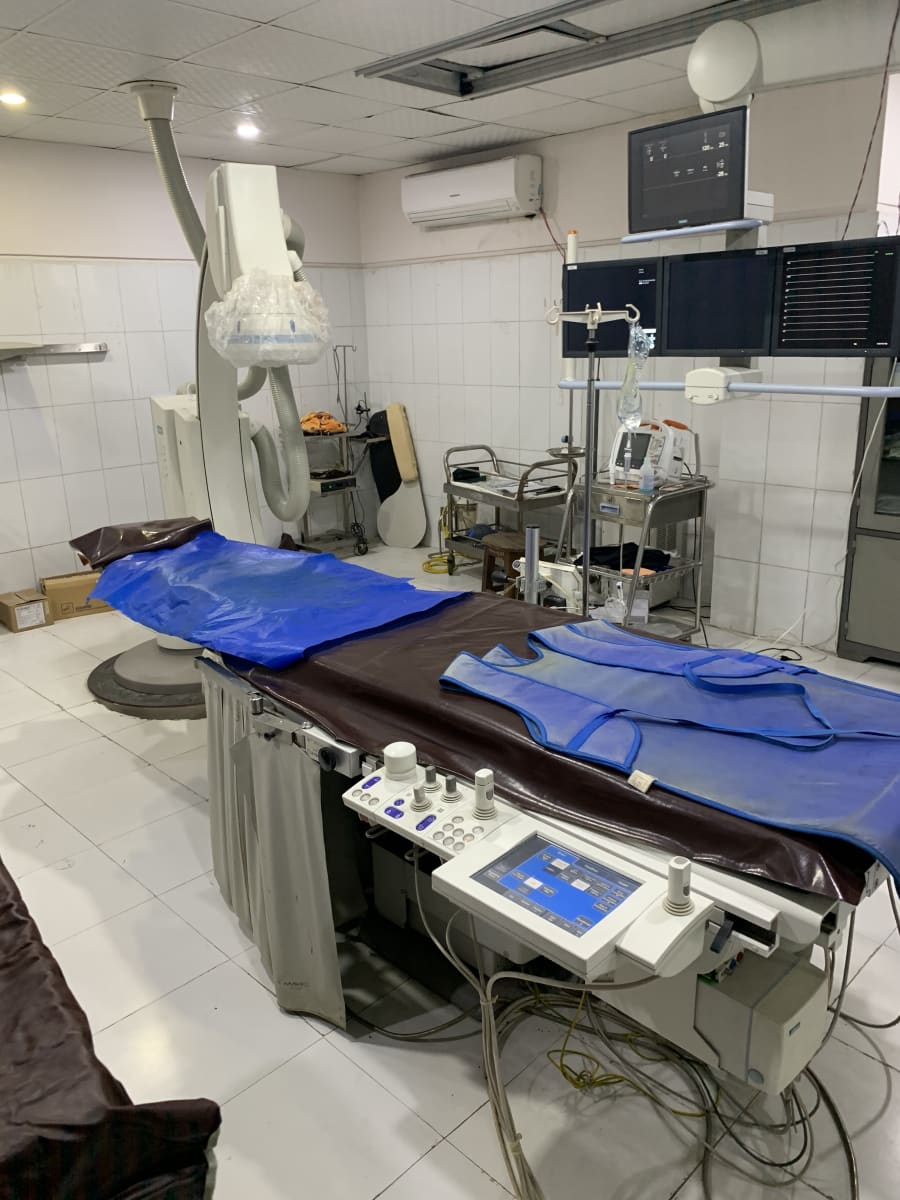RAD-AID is an organization that was started in 2008 and their mission is to increase and improve radiology resources in the developing and impoverished countries of the world. Radiology is a part of nearly every segment of health care, including pediatrics, obstetrics, medicine and surgery, and strengthening radiology in the developing world will ultimately improve healthcare. In February 2019, RAD-AID performed a readiness assessment in a hospital serving Northern Bangladesh that identified key deficiencies, including the need for a PACS system and teleradiology, interventional radiology, digital mammography, digital fluoroscopy, bone densitometry, a continuous medical education for radiology professionals, and the need for radiation safety training.
As an interventional radiologist, I plan to help implement a sustainable continuing medical education program, which will help radiologists, radiology technologists, and nurses stay current on treatment and diagnosis options. The goal is to have a program like this work well after we have left the country. Additionally, we plan on assessing if there is a need for interventional radiology services. In a place as rural and impoverished as Northern Bangladesh, it is important to provide minimally invasive treatments that will reduce hospital stays and costs. By helping assess and train healthcare professionals on how to perform minimally invasive procedures, it is my hope that patients will receive optimal treatment while better utilizing the resources of that area.
More than 75% of the population of Northern Bangladesh lives under $1 per day. It is very uncommon that patient's earn more than 3 times a average national income, and it is common that patients earn less than one third of the averaged national income. Approximately 50% of patients who receive health care in Northern Bangladesh pay their medical care costs out of pocket. 80% of the patient's total medical bills is often paid out of pocket. About 50% receive "pro-bono" services. Considering that health insurance is not a sustainable mechanism for financing healthcare in Bangladesh, it is paramount that services be performed in an efficient manner. Because healthcare so expensive, patients do not seek preventative care. Mammography for breast cancer is undertaken by less than 10% of women and tuberculosis and other chest diseases are imaged only 50% of that time. Assessing how to streamline the care patients receive will have tremendous impact. I also have a personal connection to this population. My parents were born and raised in Bangladesh and immigrated to United States approximately 35 years ago. Although I was born in the United States, I was constantly reminded of my parents struggles as they were growing up. For a long time, I have always wanted to give back to the community, if possible. Now that I have completed a medical training and am in a position to help, I want to help come up with a sustainable solution to the healthcare issues in Bangladesh.
During the readiness assessment which was done in February 2019, the M. Abdur Rahim Medical College Hospital (MARMCH) in Dinajpur, Bangladesh, worked with RAD-AID to evaluate whether the efforts of RAD-AID would have a long-term impact in their community. MARMCH is well positioned to offer the highest quality diagnostic imaging and outpatient care, and these assets would have the highest medical and social impact with a streamlined referral system to the best hospitals in the region for tertiary medical and surgical care. In general, the Radiology-Readiness Assessment in Bangladesh showed great promise for increasing training resources to improve the quality of radiology personnel in the country, with an encouraging set of stakeholders for peripheral outreach and institutional referrals. At the conclusion of the assessment, it was clear that RAD-AID can MARMCH, the surrounding hospitals, and the Bangladesh health officials make health care advances for the country. The most important aspect of the trip will be to develop a sustainable containing medical education curriculum to increase the number of trained personnel and to increase the skill levels of radiologists and technologists in the region. We will also work to develop methods for sustainable economic growth integrated with charitable and subsidized access points for those below the poverty threshold. By developing a system of peripheral outreach, referral of isolated populations, and connected health care institutions, we may play a role in advancing radiology for Bangladesh using state-of-the-art medical equipment. There is great promise for increasing training resources to improve the quality of radiology personnel in the country.






I traveled to Dinajpur, a town in northwest Bangladesh, a very long 220 miles away from the capital, Dhaka. The government funded hospital has almost no radiology capabilities. In fact, the last CT scan was performed over 20 months ago. Even with their limitations, the healthcare workers are dedicated and resilient. They strive to provide excellent patient care for their community. I worked with a group called Rad-Aid, which aims to improve access to radiology in the developing world. We assessed the needs of the community and hospital to understand how we can efficiently meet their diagnostic and interventional radiology needs. There is a lot of work that needs to be done, but I am excited that this is a start of a long and mutually beneficial relationship. Together, we hope to work towards a sustainable model to provide excellent imaging to the people of Bangladesh.